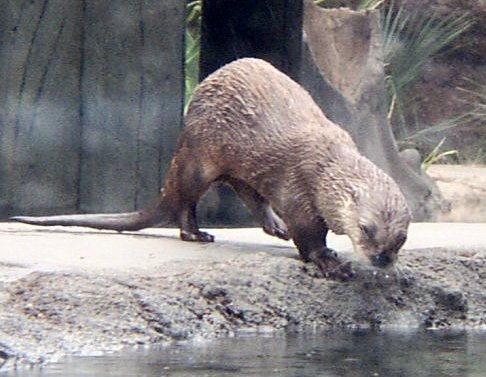North American River Otter
Physical description:
|
| Special
anatomical, physiological
or behavioral adaptations: River otters are able to withstand the cold
waters and weather because of their coarse fur hair. This hair helps
"water-proof" them and keep them warm. While swimming in the water
they can close their ears and nostrils tightly, this helps keep out the
water. While diving their pulse slows down to a tenth of its normal
rate to conserve oxygen that will be needed to stay under water.
Otters can go without air for up to eight minutes! They use a pair
of scent glands towards the end of their tail to mark their home territory.
|
 |
| Personal Observations:
The North American River Otter at the zoo seemed very hyper. It swam around and was playing with some of its companions. The signs at the zoo say that the river otter builds its home near water and has underwater openings to the water for easy access and escape. They also keep two dens, one is for nesting and the other is for use during the day. These beautiful creatures can swim at 7 mph and on land can run at 18 mph. |
|
Send E-mail to mail to:carlar80@hotmail.com or to mac@whozoo.org |

WhoZoo Home